Living in a tropical climate means we get hot and humid weather all year round. Although tropical plants generally thrive in such climates, there are also times when too much humidity can adversely affect these plants.
We first noticed some brown spots on the leaves of our Philodendron Birkin. Small little reddish-brown spots. Concerned, we asked our best friend Google for some answers and were overwhelmed by the number of potential causes.
In this post, we have listed out the common reasons behind these brown spots on foliage plants and tips on how to ‘diagnose’ them (based on our experience). Are you ready?
Firstly, there could be nothing wrong at all…
There is a chance that spots appearing on leaves are naturally-occurring.
For instance, certain Philodendron species actually naturally produce brown spots called nectaries. When they are growing well, they secrete a sweet sap from brown spots that attract insects. Most of the time, they are found on the leaf stems (petiole) but some species also produce them on their leaves. Confusing right? 😂
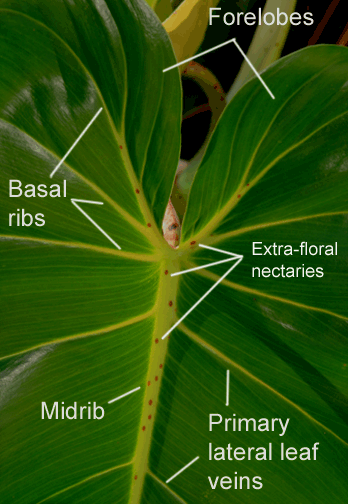
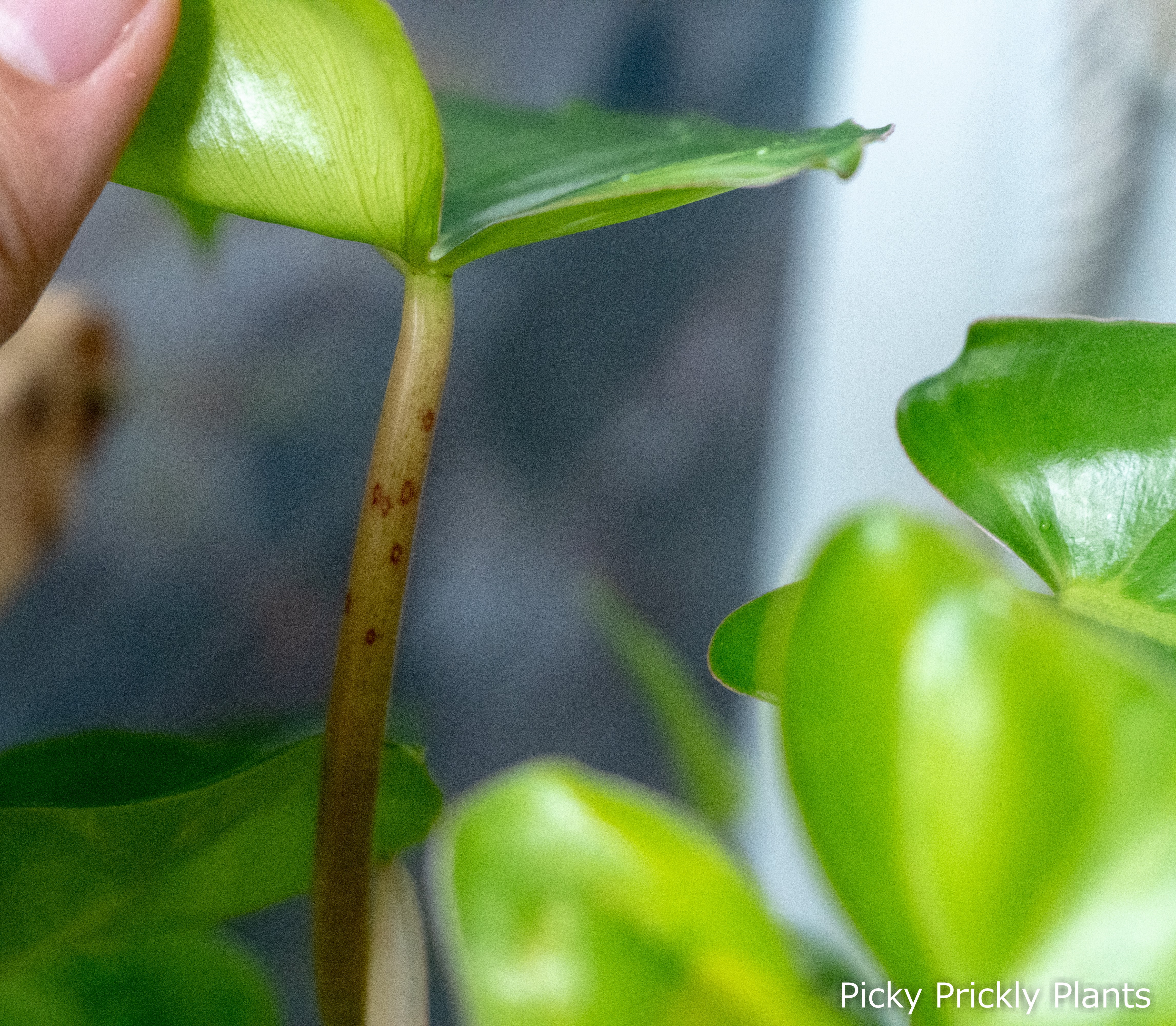
Some plants from the Ficus family produce tiny white speckles on the edges of their leaves called lithocysts. They are enlarged cells containing crystals of calcium carbonate. These spots can’t be rubbed off and are spaced out in a rather orderly manner (almost like a pattern).
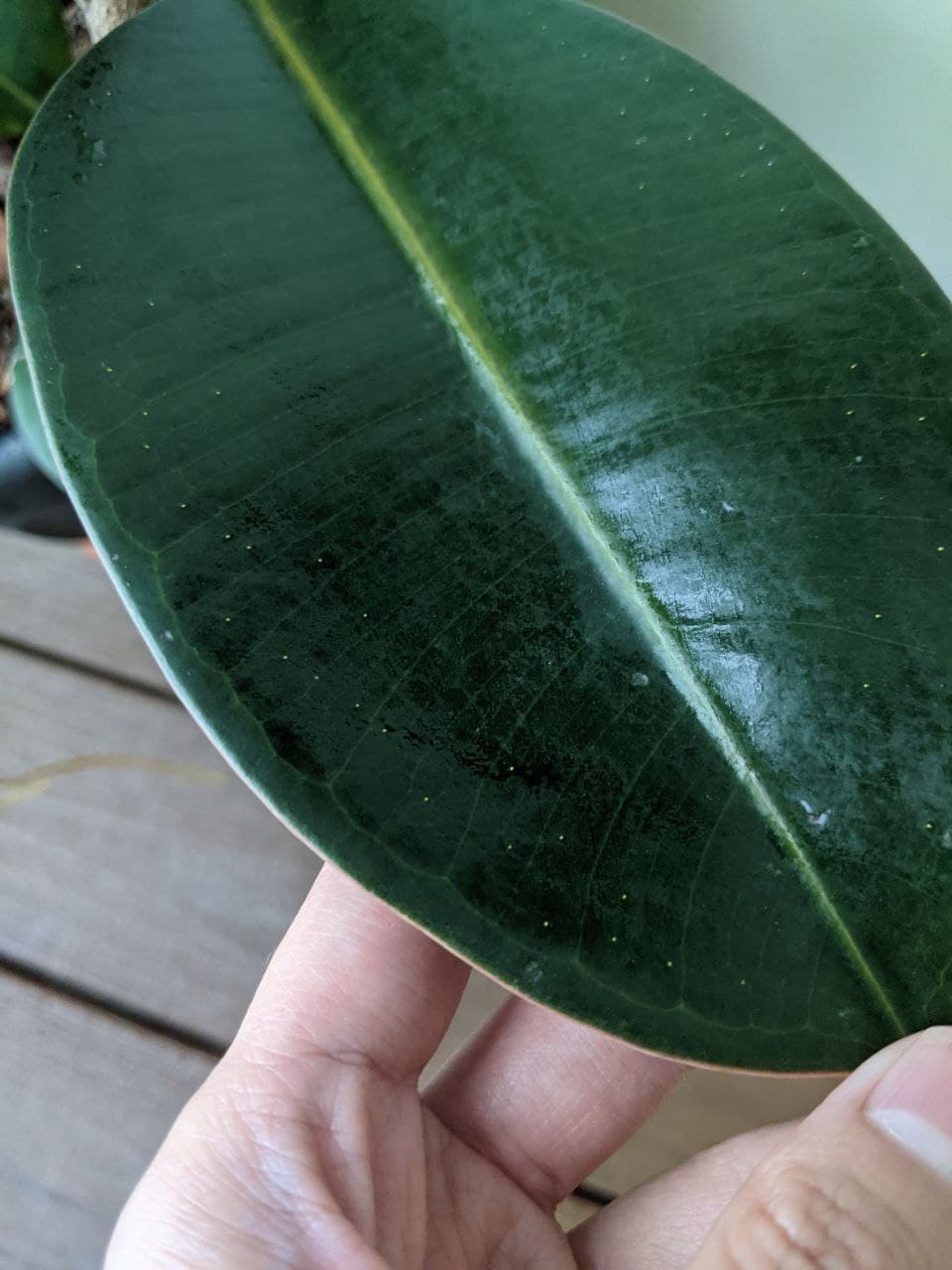
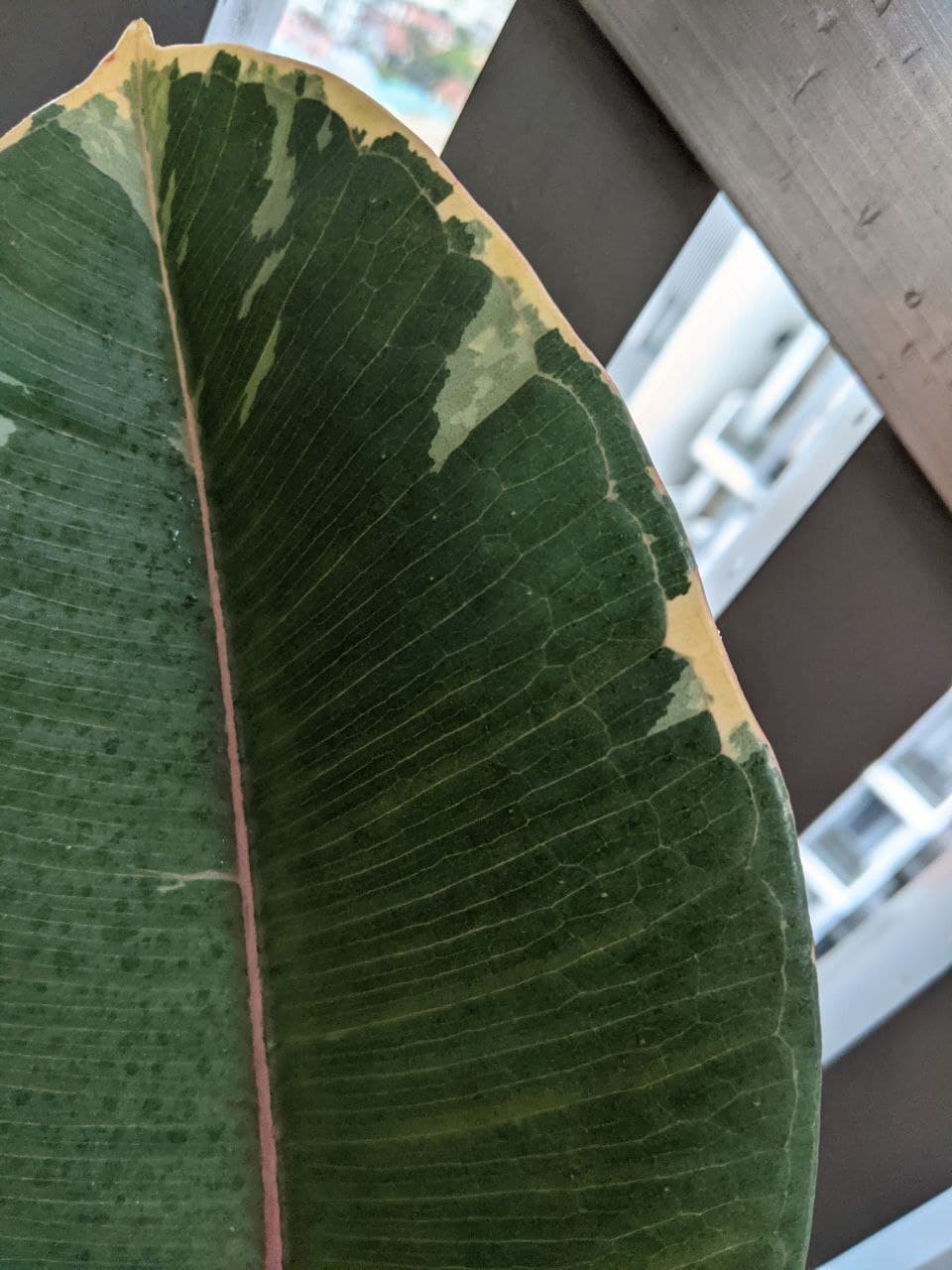
So, before you start panicking – look up your plant online or check in with your peers in plant interest groups or forums. It’s extremely likely that someone would have dealt with or freaked out about these spots before you. 🤓
Fungal infection due to overwatering
Symptoms
Here in Singapore, we’ve been getting really wet weather since December last year (which is an absolute nightmare for us as outdoor-plant-growers). We’re talking about non-stop rain for days here. 😰
If you mist your plant regularly and there’s a lack of wind/ventilation, or if you’re giving your plant too much love water, or if you are experiencing extreme wet weather like us, or all of the above… 😵 there’s a likely chance that the spots you see are fungal spots.
Most of the time the problem starts at the roots where it is wet and the plant reacts by showing signs of distress like:
- Yellowing of leaves
- Brown spots that may spread
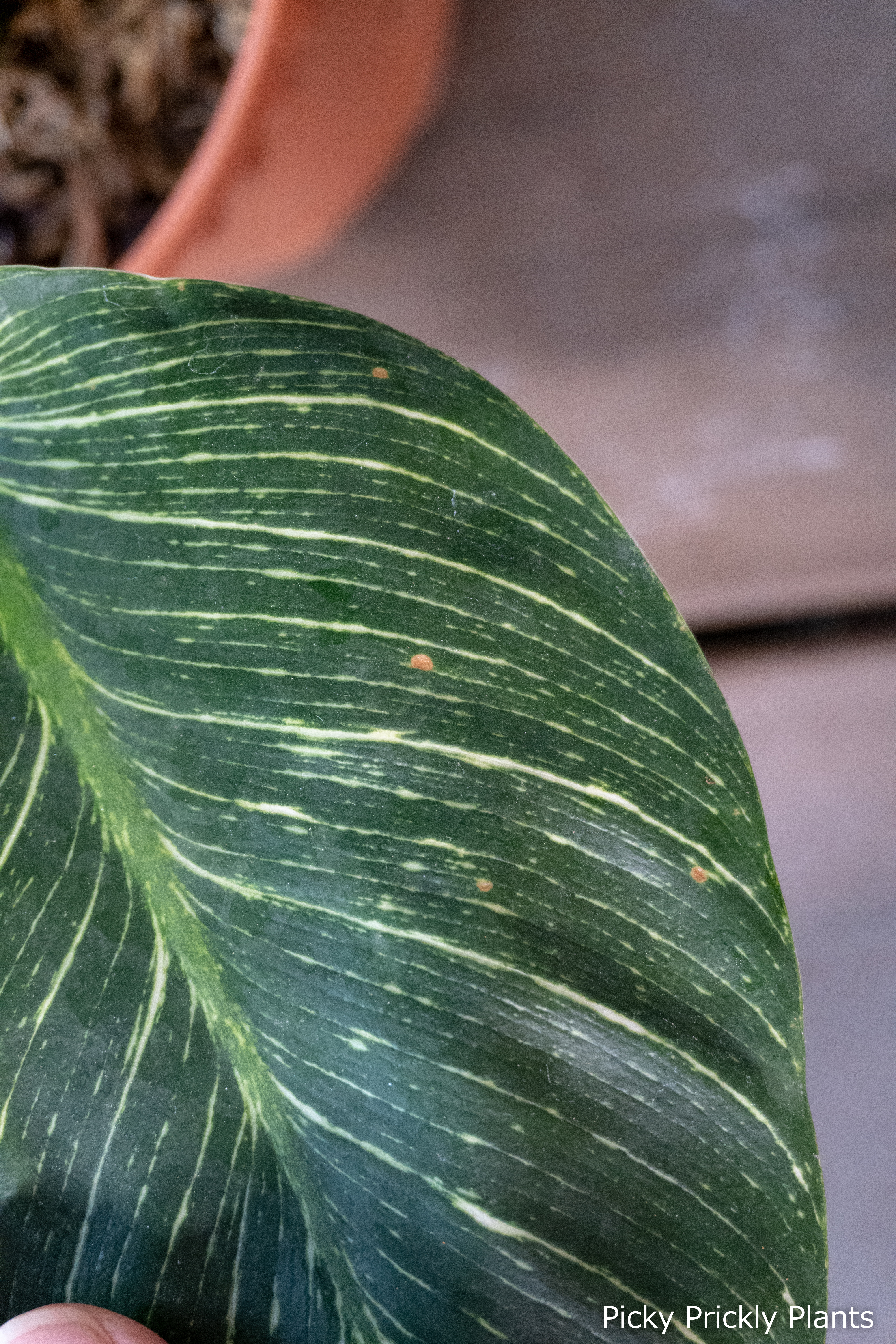
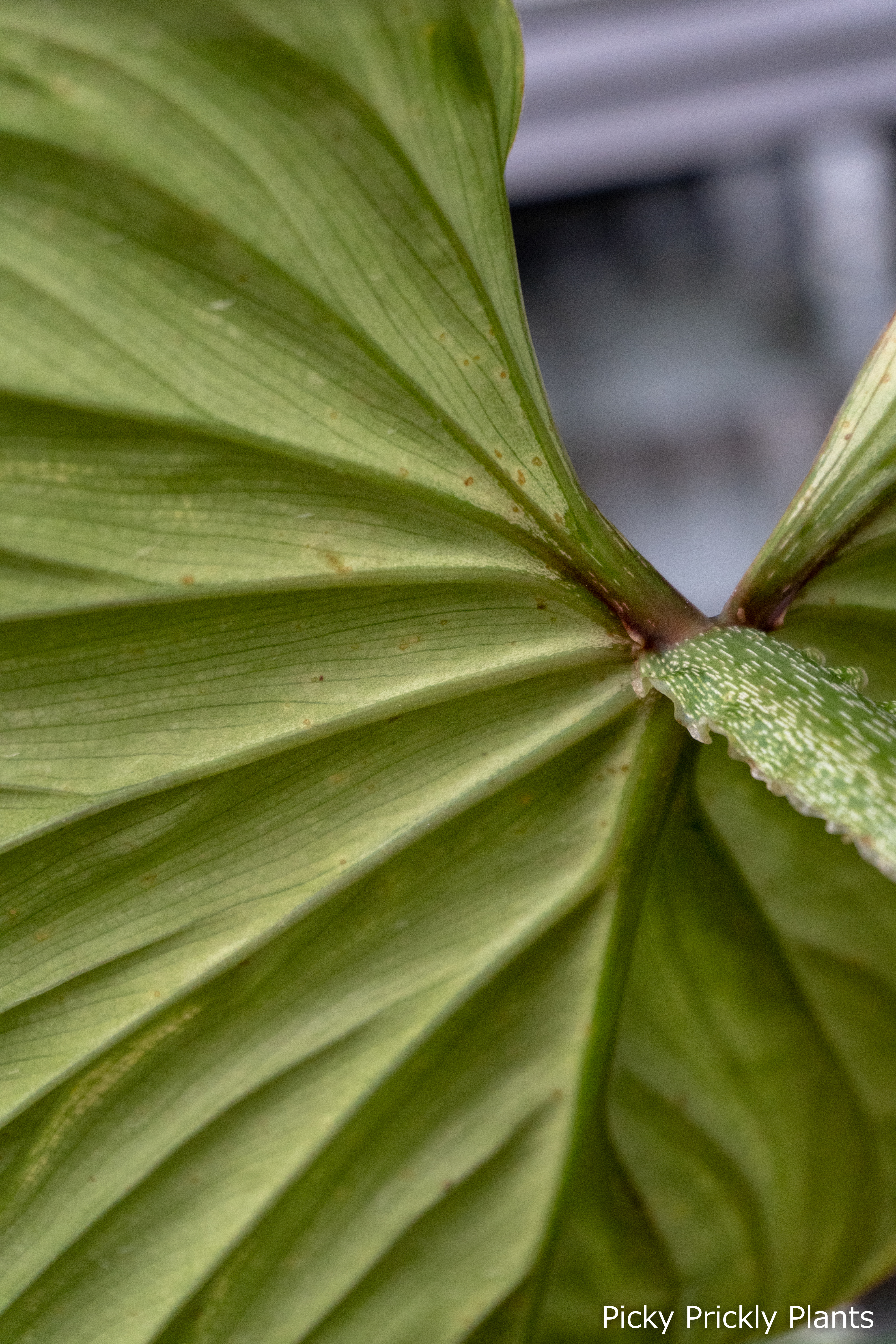
When plants take up more water that they can dissipate through transpiration, cells may rupture and leak water to surrounding areas between them (Read more about Oedema). This creates an opportunity for fungal infections to start. If you have been watering too frequently or your media is always wet, this should likely be the reason.
Misting your plants and not letting the water dry out will also increase the chances of fungal infections. It is better to use a humidifier than directly spraying water on the leaves (provided that you have sufficient ventilation around the plant).
We talk about sunburnt leaves in the section below, but a good way to spot a fungus spot (as opposed to sunburn) is the black/brown ring around the spot. This is due to the plant trying to fight off the infection by killing the cells around the infection to stop the spread.
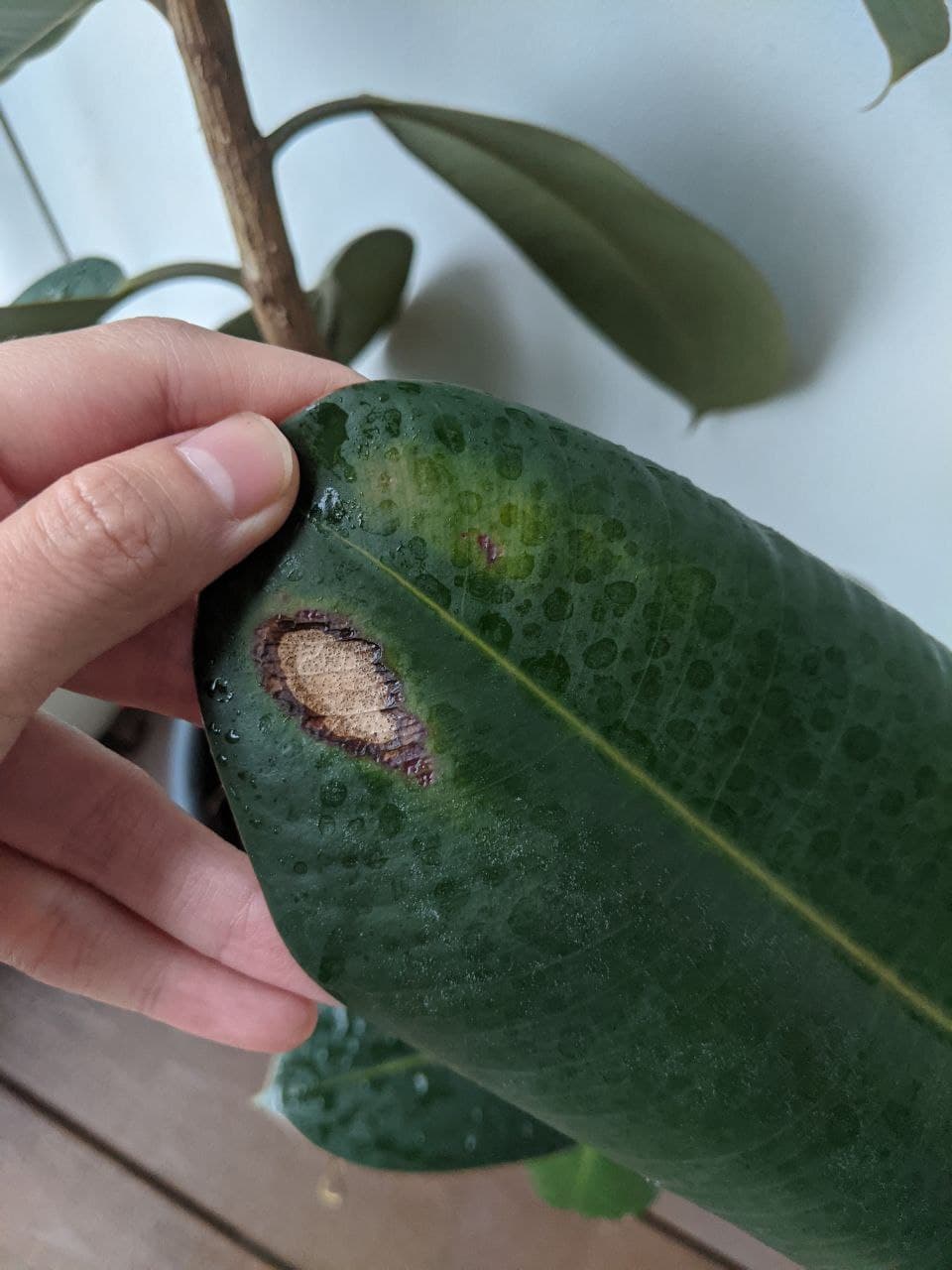
Treatment
Read this post for treatment methods for fungal infection on foliage plants.
Pests (Spidermites or Thrips)
Symptoms
This problem is easy to spot. Best way to tell is to closely look at the underside of the leaves for bugs. Take a paper towel and wipe the underside of the leaves and you will see streaks of insect blood.
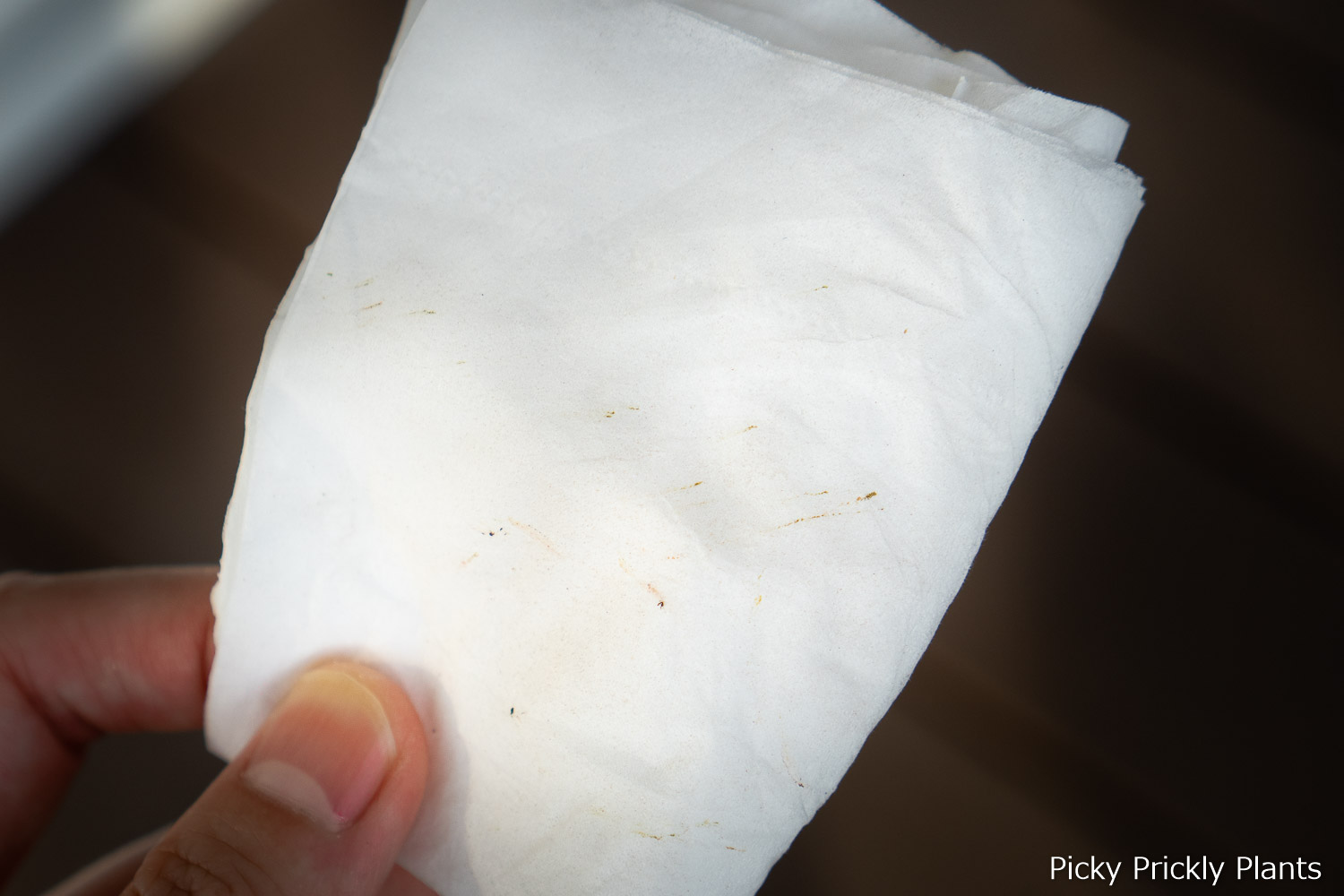
Pest bite marks look very different from fungal or bacterial infection. Firstly, they are usually small white dots. Secondly, the marks do not spread out from the center. The insects puncture plant cells and suck out all the good stuff including the chlorophyll that gives plants their green colour. The result is a scar that is made up of dead cells.
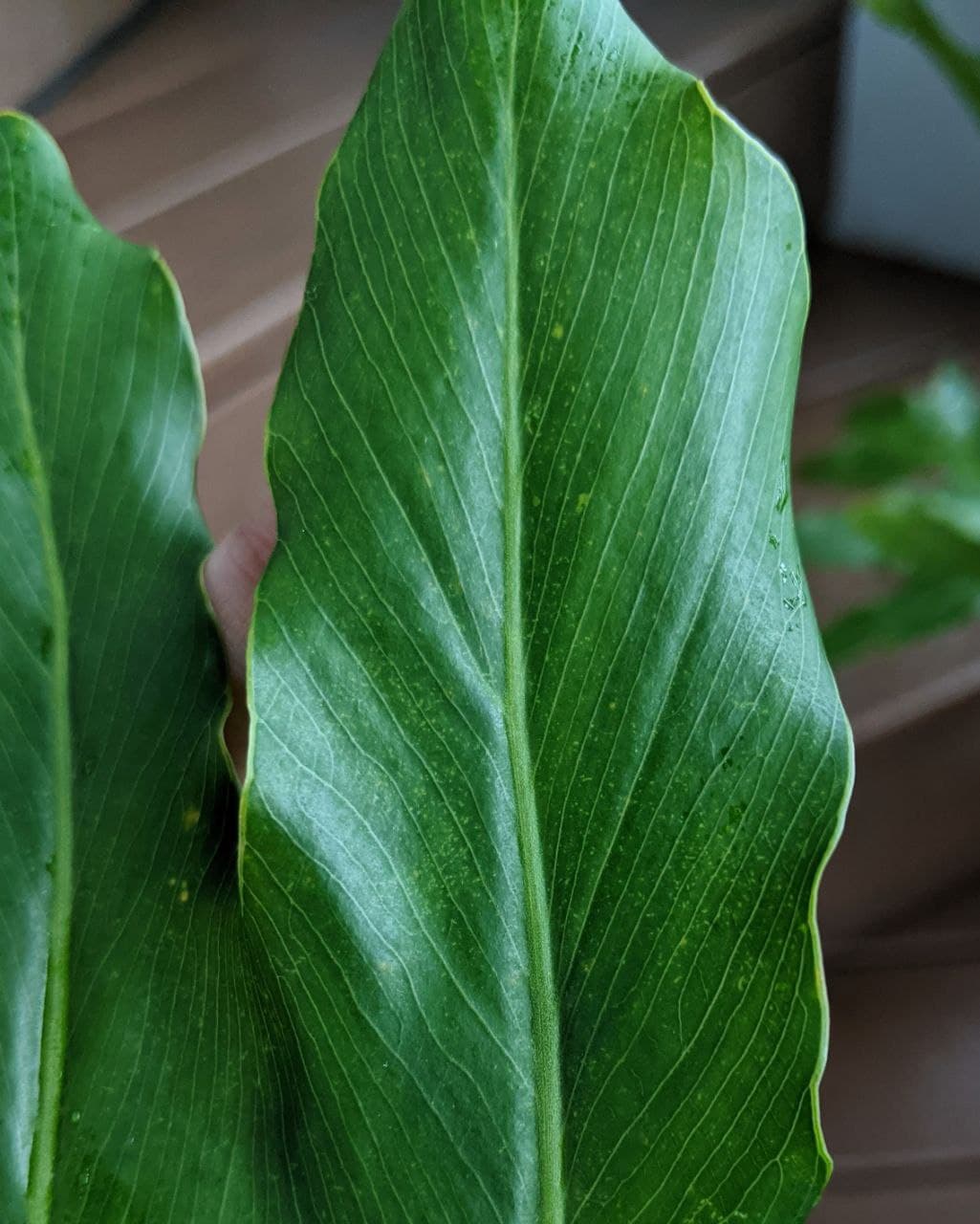
Treatment
Refer to this post regarding getting rid of plant pests.
Bacteria
Symptoms and treatment
Identifying and treating bacteria infections in plants is a difficult topic. Not much has been written on this and it seems like a field of study that is still developing.
Nevertheless, there are some common signs such as water lesions and a yellow halo around the brown spots that could point to a bacteria infection.
/DSC00848.JPG)
Other than cutting the infected leaves off and letting the plant fight for itself, there is, unfortunately, little known effective methods to cure the plant at this point in time.
In this case, prevention is the way to go. Should you see any (potentially) infected leaves or rotting ones, remove them early and keep your tools clean.
Sunburns
Symptoms
Sunburns tend to look like a dried and crispy spot. Sudden exposure to full afternoon sun might burn a hole on the leaf. This is usually exacerbated by spraying water on your leaves on a hot day. Water droplets concentrate the sunlight on a single spot like a magnifying glass that could kill the cells there.

Treatment
There is no way a plant can ‘heal’ the burnt spot but you can definitely prevent this from happening.
- If you just got this plant, slowly introduce your plant to full sun by inching it closer to the window or balcony. Never expose new plants to full sun right away.
- Avoid spraying water or misting your plant on a sunny day.
- Avoid having water collect or form on leaves. This will also help to prevent fungal infections.
In summary, what should you do?
- Isolate the plant in case it is something contagious
- Look up your plant online to see if these spots could be naturally occurring. If not:
- Try to identify the issue
- Examine the spot and monitor if it is spreading
(if so, cut the infected leaves off ASAP!) - Evaluate how you have been watering the plant
- Check the environment your plant is in for red flags
- Examine the spot and monitor if it is spreading
- Fix the problems and monitor for improvement
That being said, it’s not always going to be a 100% accurate diagnosis even with this list. Gardening is all about experimenting, learning and finally realising what works for you and what did not. It’s definitely not easy, but that is what makes the journey so enjoyable… right? 😆
If you see any brown spots and want us to take a look, do comment with a photo and we can try to investigate it together.
Happy planting! 😜


2 thoughts on “Why are there brown spots on my indoor plants?”